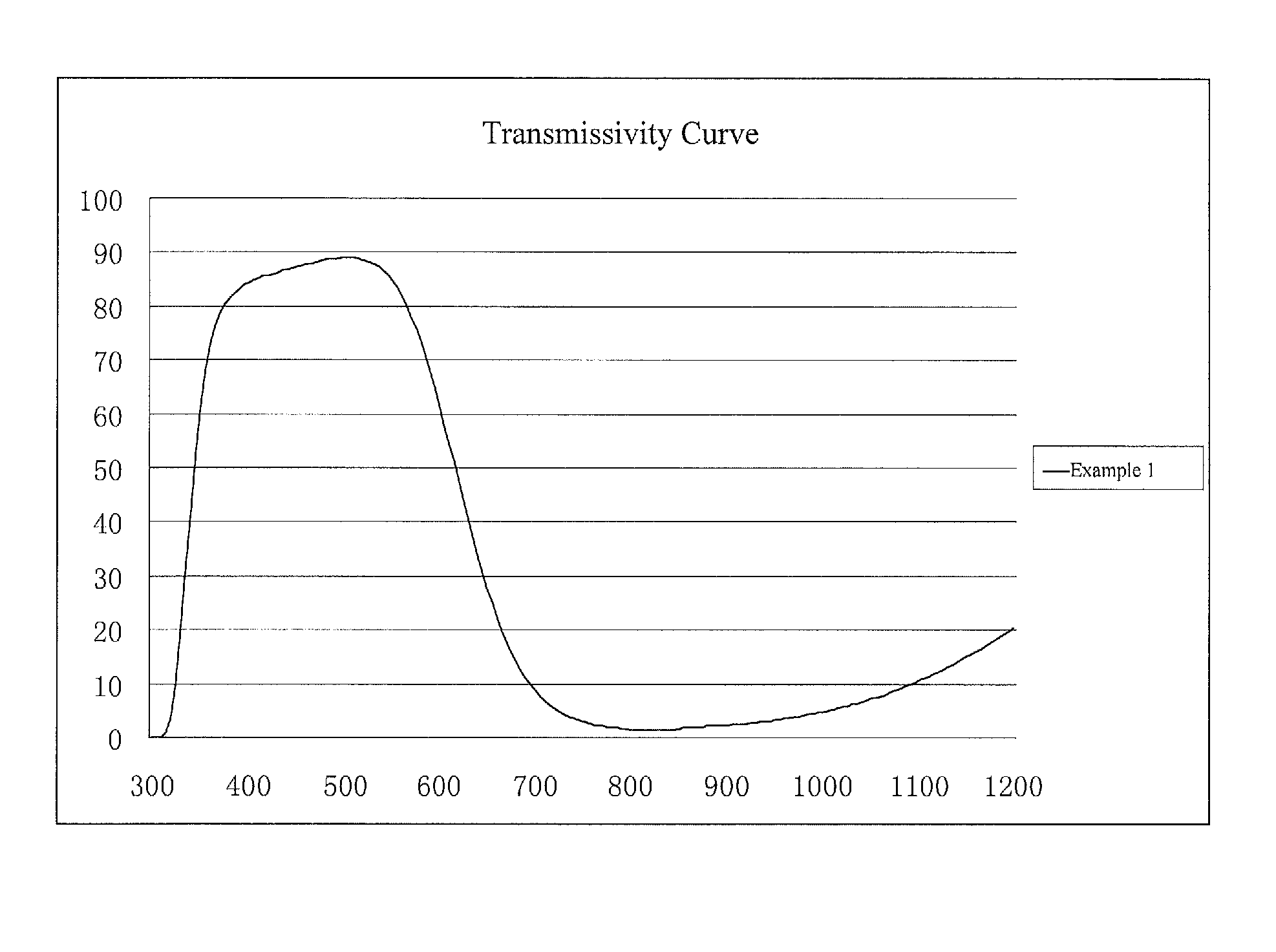Near-infrared light absorbing glass, element and filter
a technology of near-infrared light and filter, which is applied in the field of near-infrared light absorbing glass, near-infrared light absorbing elements and near-infrared light absorbing filters, can solve the problems of inferior chemical stability of phosphate glass and whitish turbidity on the glass surface, so as to achieve excellent chemical stability of glass, effective lowering of glass melting temperature, and effective reduction of glass melting temperature
- Summary
- Abstract
- Description
- Claims
- Application Information
AI Technical Summary
Benefits of technology
Problems solved by technology
Method used
Image
Examples
examples
[0081]The invention will be described in more detail by the following reference examples. However, the invention is not limited to said examples.
[0082]Fluoride, metaphosphate, oxide, nitrate and carbonate are used as raw materials of the glass provided by the invention. The optical glass provided by the invention is obtained through the following steps: weighing said raw materials according to the proportions as shown in Tables 1 to 3 and placing into a platinum crucible sealed with a cover after mixing fully, melting at 700 to 900 DEG C, settling and protecting with oxygen simultaneously with conducting homogenization, and then enabling the molten glass to flow out from a temperature-controlled pipe at a constant speed to form the optical glass.
examples 1 to 20
Examples of Manufacturing the Near-Infrared Light Absorbing Glass
[0083]
TABLE 1Examples12345678910PositiveP5+27.524.219.621.722.223.121.025.018.725.4Ions %Al3+13.41015.311.88.712.712.910.415.611.3Li+2.43.84.45.97.92.42.13.83.01.1Na+0.61.4000001.01.50K+00000.500020R2+54.456.257.457.960.359.661.158.055.861.2Mg2+2.86.83.67.24.44.64.83.97.13.1Ca2+7.13.911.56.916.19.910.512.57.78.4Sr2+27.629.122.718.916.124.825.122.723.427.1Ba2+16.916.419.624.923.720.320.718.917.622.6Cu2+1.74.43.32.70.42.22.91.83.41.0Total100.0100.0100.0100.0100.0100.0100.0100.0100.0100.0NegativeF−52.854.453.855.151.751.552.451.352.850.7Ions %O2−47.245.646.244.948.348.547.648.747.249.3Total100.0100.0100.0100.0100.0100.0100.0100.0100.0100.0DW1111111111DA2333333323
[0084]
TABLE 2Examples1112131415PositiveP5+23.522.920.121.923.0Ions %Al3+11.912.113.812.813.0Li+2.53.02.42.04.1Na+1.00.7002.5K+00000R2+5959.161.261.356.2Mg2+4.94.34.65.33.3Ca2+9.110.211.110.98.5Sr2+26.225.123.924.223.7Ba2+18.819.521.620.920.7Cu2.12.22.52.01.2Total1...
PUM
| Property | Measurement | Unit |
|---|---|---|
| wavelength | aaaaa | aaaaa |
| length | aaaaa | aaaaa |
| length | aaaaa | aaaaa |
Abstract
Description
Claims
Application Information
 Login to View More
Login to View More - R&D
- Intellectual Property
- Life Sciences
- Materials
- Tech Scout
- Unparalleled Data Quality
- Higher Quality Content
- 60% Fewer Hallucinations
Browse by: Latest US Patents, China's latest patents, Technical Efficacy Thesaurus, Application Domain, Technology Topic, Popular Technical Reports.
© 2025 PatSnap. All rights reserved.Legal|Privacy policy|Modern Slavery Act Transparency Statement|Sitemap|About US| Contact US: help@patsnap.com

